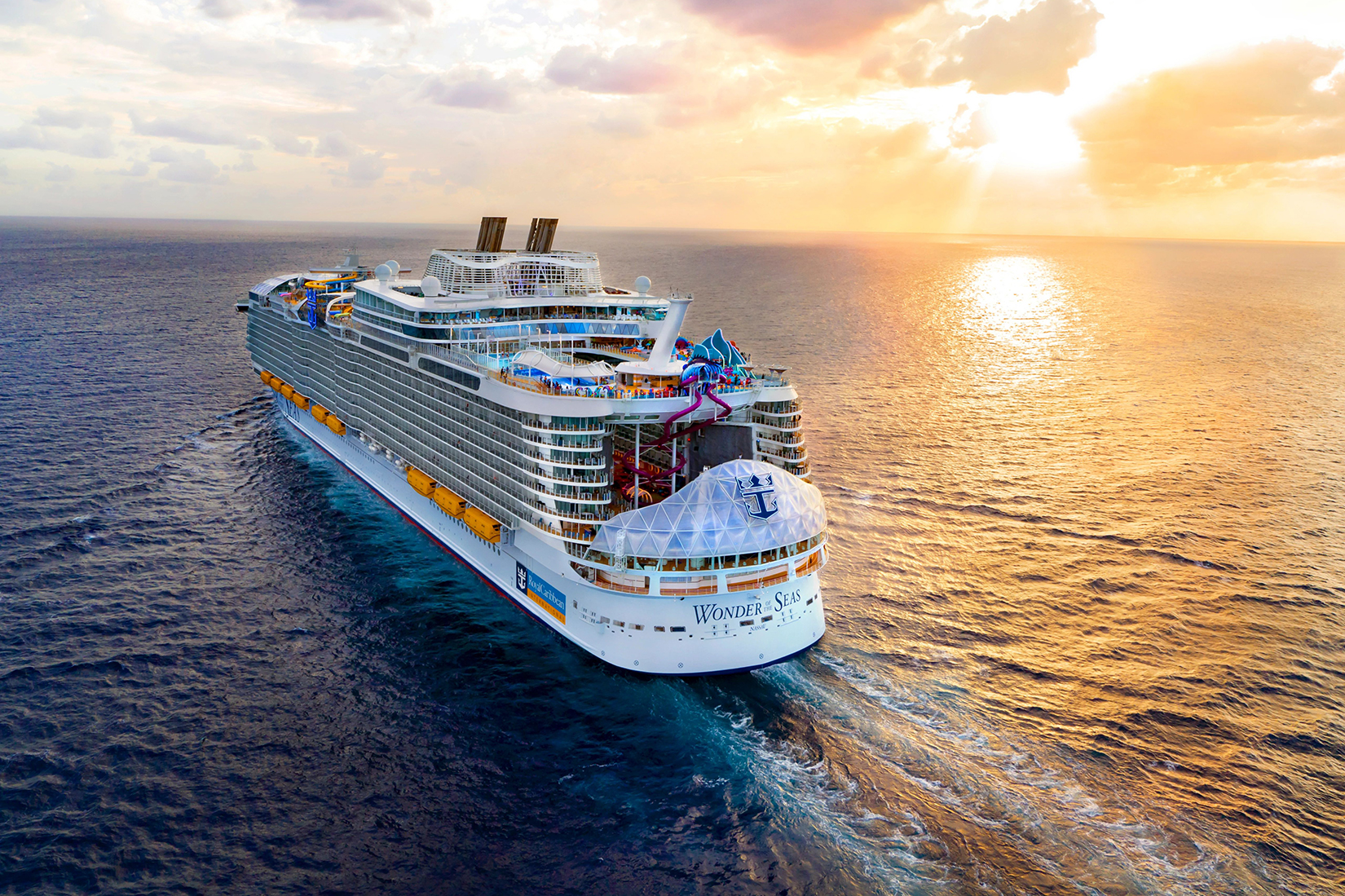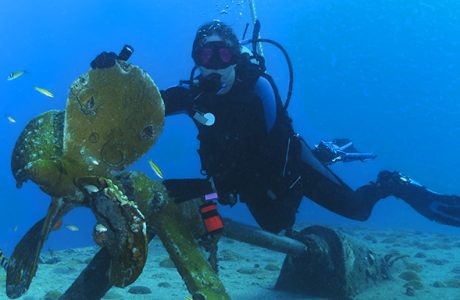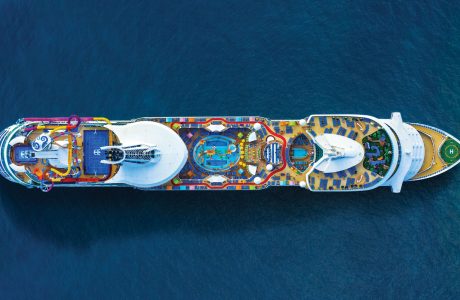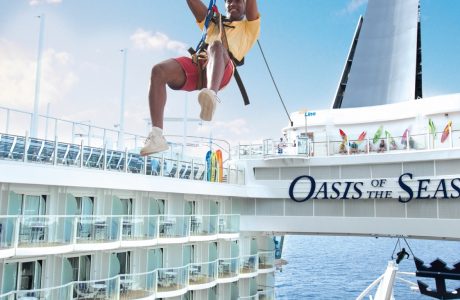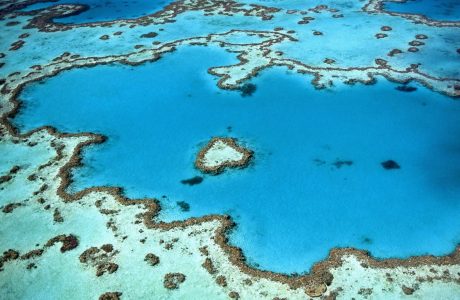One of the many reasons to take a cruise is the opportunity to explore the natural beauty of both the oceans and destinations around the world, from the cool waters and wilderness of Alaska to the warm Caribbean Sea and its idyllic islands.
These wonders depend on the environment, which is why Royal Caribbean has spent decades protecting the destinations you visit and the communities that call them home. The best part? Your vacations can be as responsible as they are memorable.
It all started more than 30 years ago with a recycling program called Save the Waves. That’s now grown to involve partnerships with experts like World Wildlife Fund (WWF) and innovations to use, conserve and repurpose energy and reduce emissions, waste management and more. Although these efforts mostly go on behind the scenes, what you’ll find “under the hood” are many features and initiatives on both Royal Caribbean’s ships and private destinations, like Perfect Day at CocoCay,
Read on to dive into five of Royal Caribbean’s key sustainability practices:
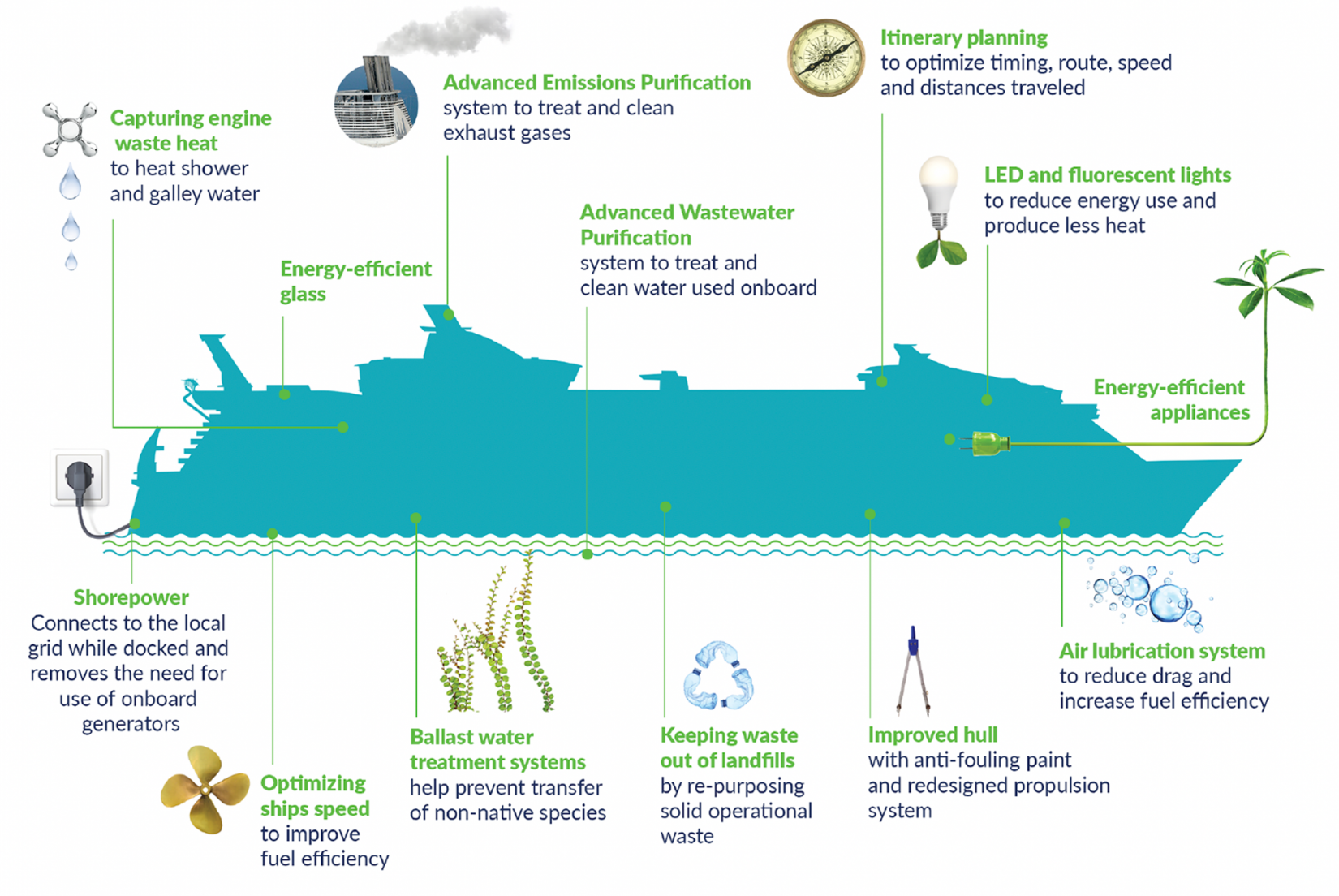
Energy is conserved with features like LED and fluorescent lights. Ships are also increasingly using liquefied natural gas (LNG), the cleanest-burning marine fuel.
Credit: Royal Caribbean
Energy
From entertainment venues that span four “stages”—air, ice, theater and water—like the signature AquaTheater, where there’s high diving, slacklining, 3D flying and more, to adventures never seen before on land or at sea—like the North Star observation capsule that offers unrivaled 360-degree views of the world below—innovations run the gamut on Royal Caribbean ships. They include sustainable features, too.
When it comes to sustainability—including all the ways energy is used, conserved and repurposed—the smallest details matter. That’s why Royal Caribbean uses energy-efficient appliances, LED and fluorescent lights and an air lubrication system that allows ships to float on air. Icon of the Seas—which will be Royal Caribbean’s most sustainable ship to date when it sets sail in January 2024—as well as Wonder and Odyssey are also all shore-power ready, meaning they can plug into local power grids, reducing emissions by replacing the need to use fuel every time they’re in town.
Icon will also be the brand’s first ship to be powered by liquefied natural gas (LNG) and fuel cell technology. LNG is considered the cleanest-burning marine fuel available and fuel cells (like a battery pack for your laptop or in your mobile phone—but a lot bigger!) generate power without producing any pollutants.
Fun fact: Royal Caribbean’s new Galveston terminal, which opened in 2022, is the world’s first to use zero energy.
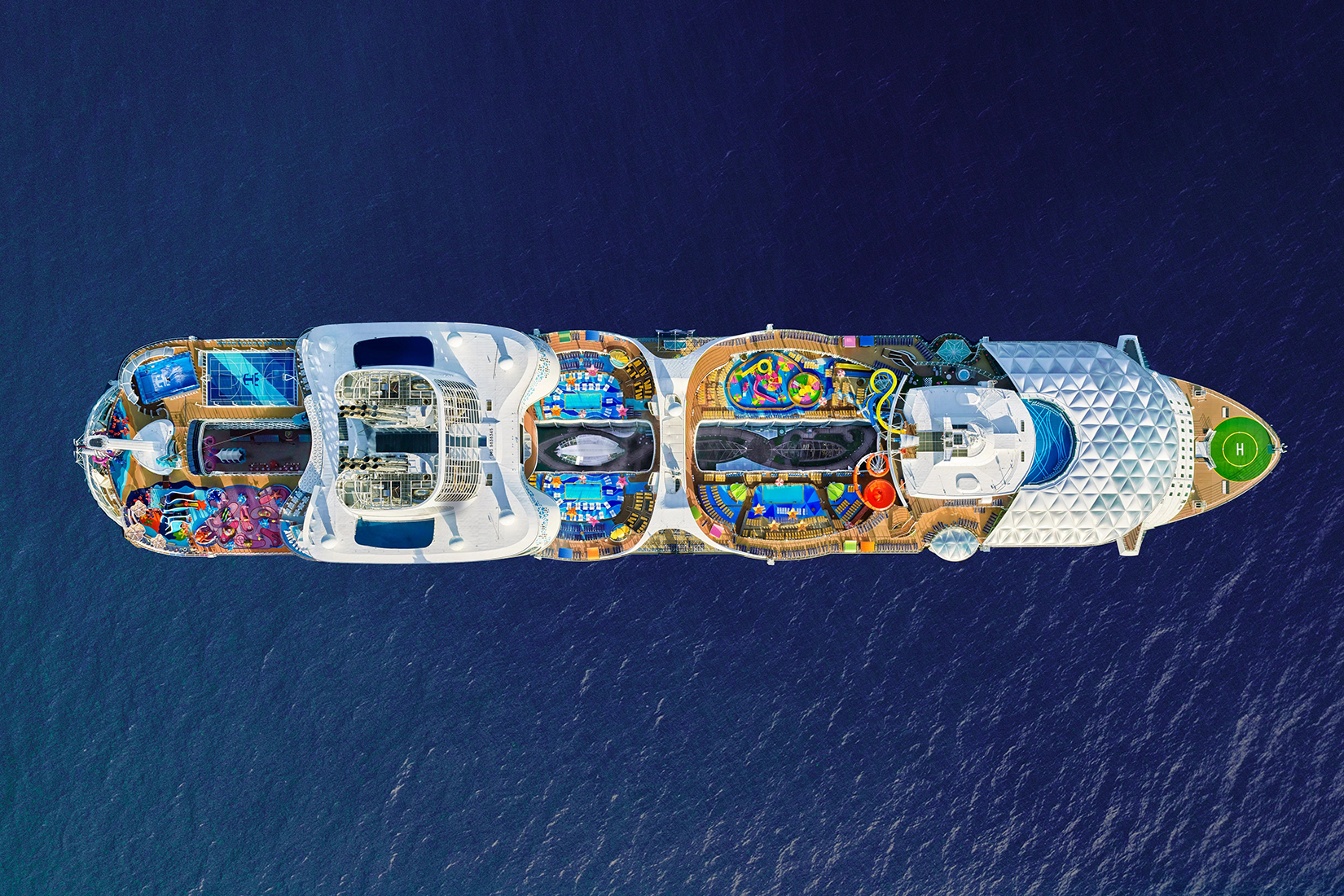
Up to 90% of the freshwater used onboard—for drinking, showers, waterslides, pools, etc.—is produced on ships.
Credit: Royal Caribbean
Water
Water makes up 70% of the earth; it’s how you cruise from one destination to the next. It’s also used to clean, hydrate and allow guests to make a splash at the largest waterpark at sea. Thanks to desalination and reverse osmosis systems, ships can produce about 90% of the freshwater used on board all on their own. This water is used for everything from highspeed waterslides and pools for days to drinking water and shower water.
When it comes to conserving water, it’s about getting creative. Take the AC unit in your room: While it’s keeping you cool, the condensation from it is treated and repurposed to clean laundry. And Perfect Day at CocoCay has a water specialist that uses treated water from Thrill Waterpark for the private island’s landscaping.
Fun fact: Desalination and reverse osmosis turn salt water into freshwater by removing minerals and contaminants. It’s a common process used on ships, submarines and in agriculture.
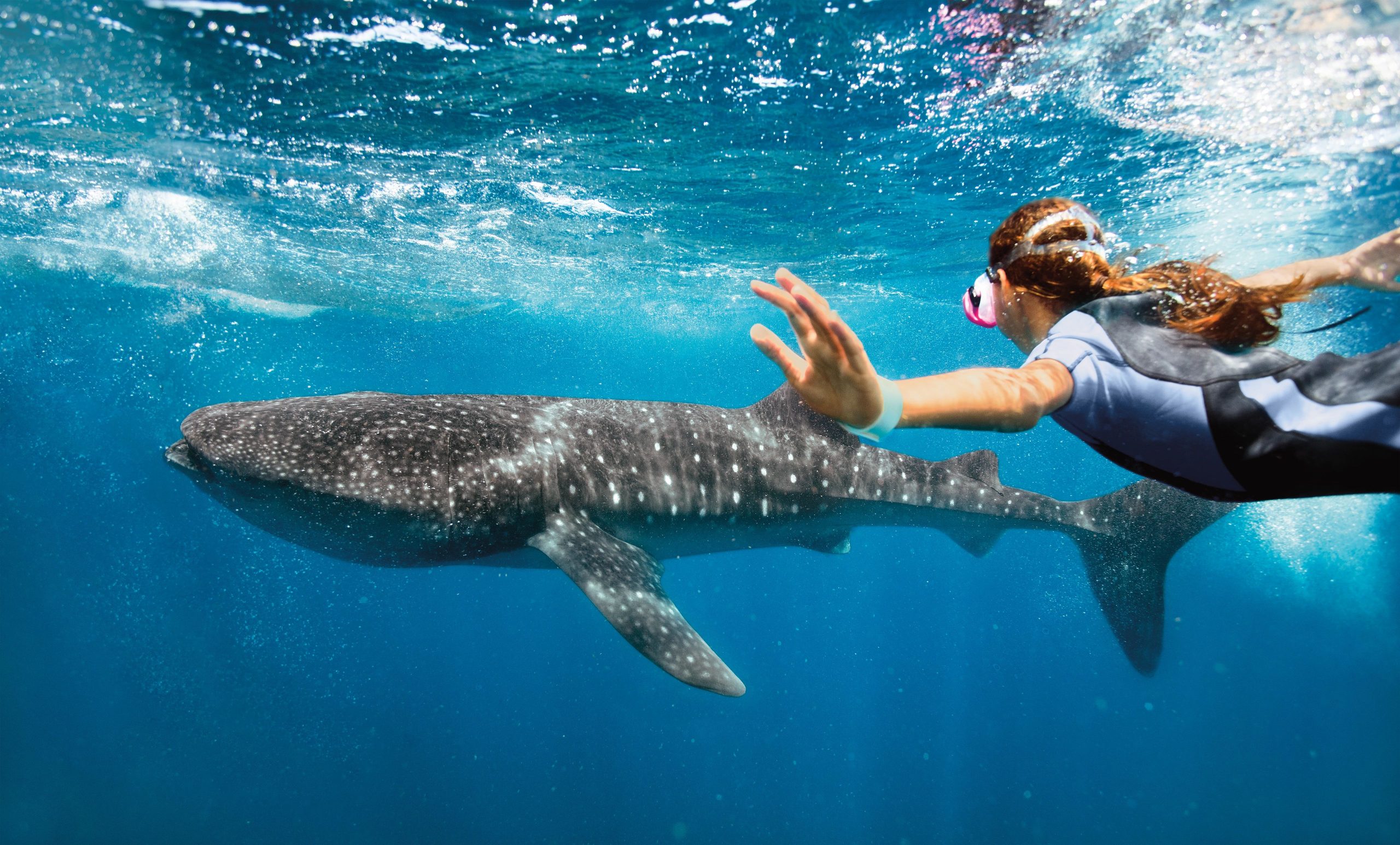
Royal Caribbean has reduced single-use plastics by 60% in order to protect the oceans that endangered species like sea turtles and whale sharks call home.
Credit: Royal Caribbean
Waste
Around the world, waste impacts natural habitats and wildlife, including endangered sea turtles, humpback whales and more. That’s why every ship is equipped to be landfill-free. Having a long-standing partnership with Green Hub, a waste vendor program, ensures that all trash is either recycled, repurposed or sent to a waste-to-energy facility. Because of that, on average, 85% of the waste on board never reaches a landfill.
It’s also about taking a look at what’s creating that waste. Royal Caribbean has reduced single-use plastics, like straws, plastic bags, water bottles, stirrers and picks, by 60%. You’ll also notice other ongoing efforts, such as reusable silverware and glassware at restaurants. And speaking of restaurants, food waste has been reduced by 24% through the Win on Waste project, which helps ships calculate exactly how much food they’ll need through the use of both technology and a Food Operations Excellence Controller on board.
Fun fact: With partners like WWF, more programs and goals have been developed to improve the long-term health of the oceans and their wildlife. You can learn more about them here.
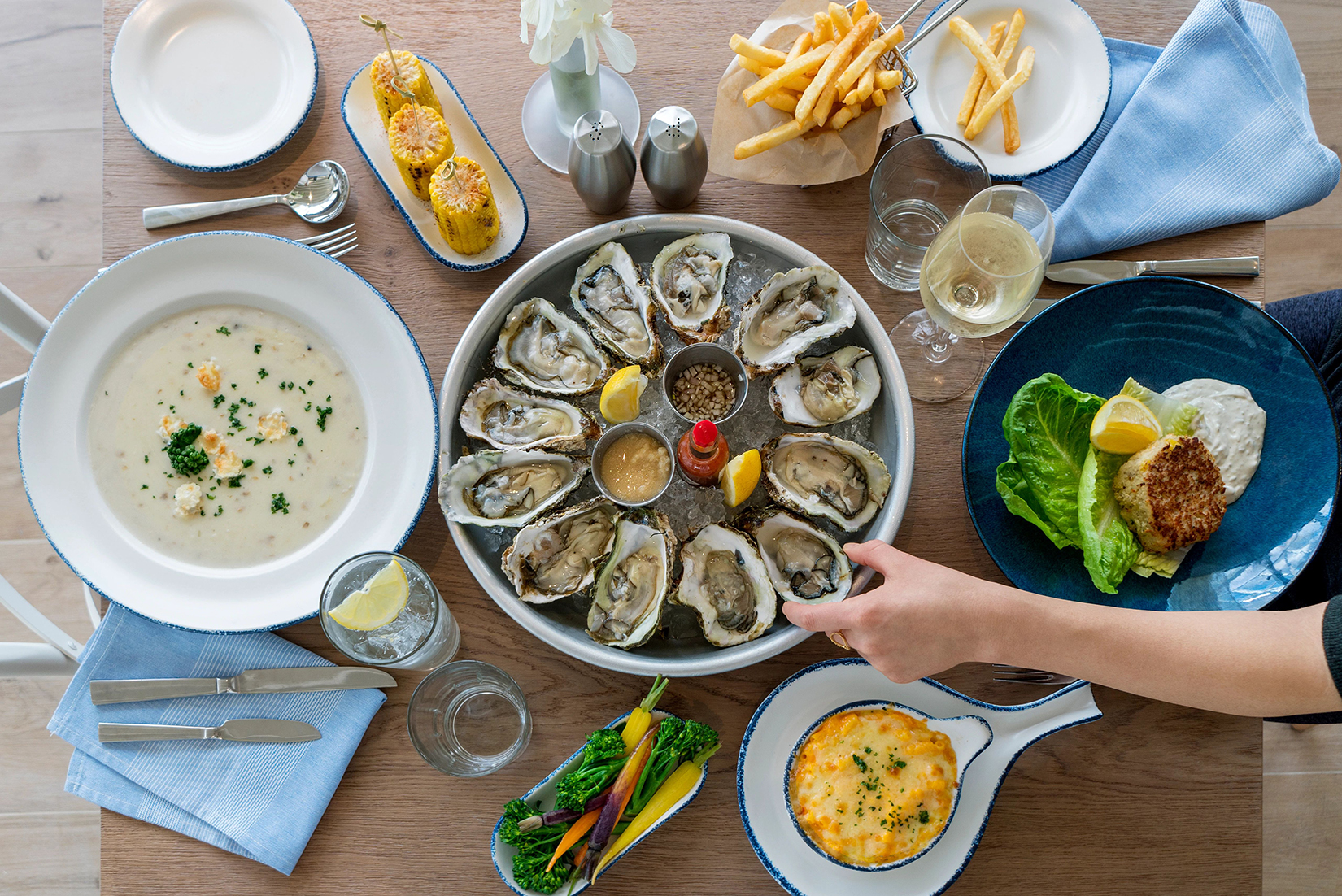
Savor freshly shucked oysters and other sustainably sourced seafood at onboard restaurants like Hooked Seafood.
Credit: Royal Caribbean
Sustainable Sourcing
Before, between and after your adventures, you can break bread with your family and friends at a variety of restaurants on board. There’s something for everyone, whether you’re craving ice-cold brews and bar food with a side of friendly competition at Playmakers Sports Bar & Arcade or fresh sushi and sizzling hibachi at Izumi. Along with all those options, Royal Caribbean is also serving up sustainably sourced foods.
A key part of this initiative is sustainable seafood sourcing. The goal is to source 90% of wild-caught seafood and 75% of farmed seafood from suppliers certified by the Marine Stewardship Council and the Aquaculture Stewardship Council—a first for the cruise industry. Sustainable sourcing gives time for certain species, like tuna and salmon, to regrow their population. By already meeting the benchmark of 75% farmed seafood from the Marine Stewardship Council, this practice is leading to better-quality dishes on your table, too.
Fun fact: The Marine Stewardship Council aims to set standards for sustainable fishing. The Aquaculture Stewardship Council establishes guidelines on farmed seafood while ensuring sustainable aquaculture.
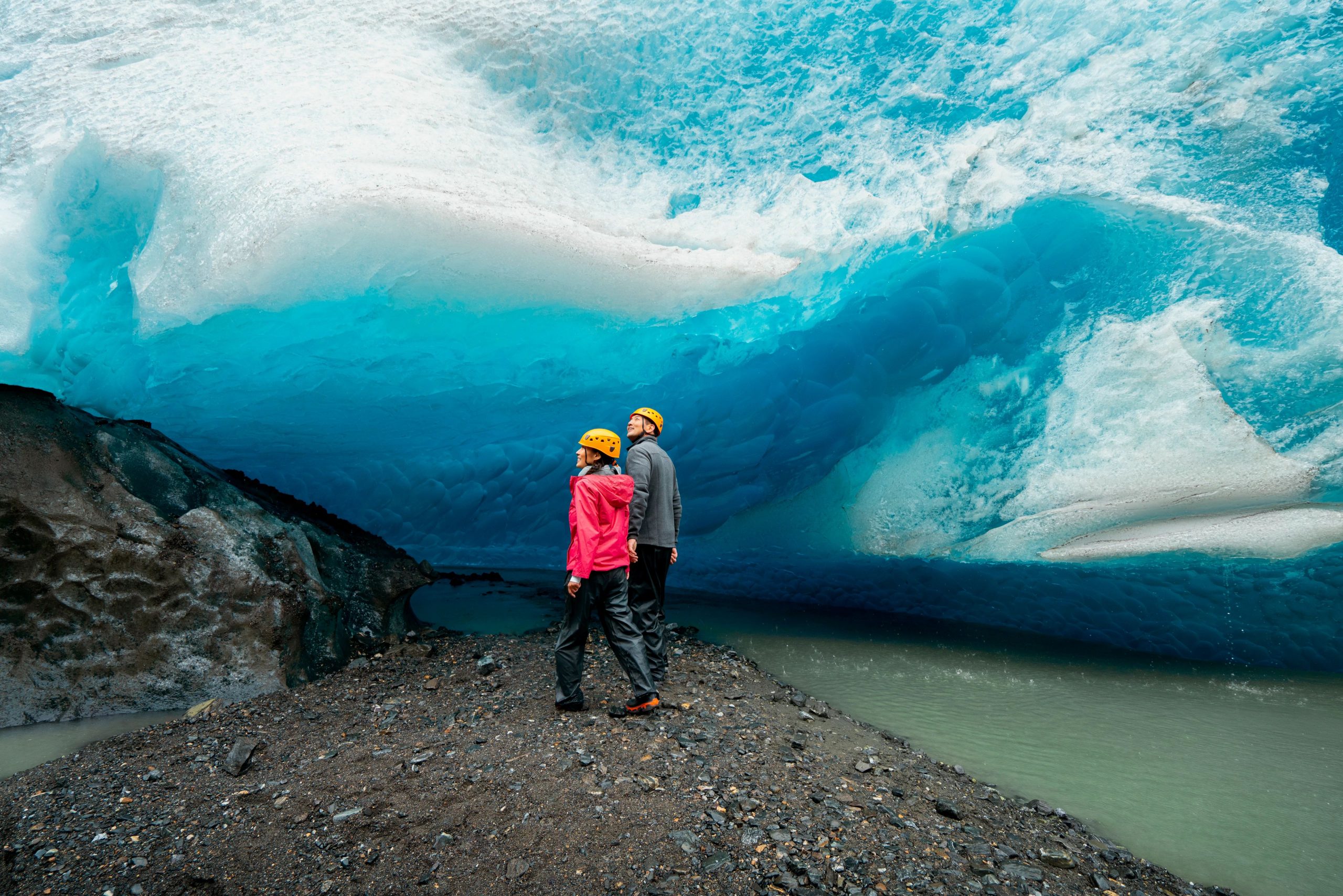
Eco-friendly shore excursions allow you to see a variety of natural sites, sustainably. Think: green Caribbean jungles, pristine Alaskan glaciers and more.
Credit: Royal Caribbean
Sustainable Tourism
On a cruise, you can set your sights on exploring multiple distant beaches, natural reserves, metropolitan city centers and far-flung destinations—all in one vacation. A great trip, whether you’re exploring a remote island or trying out a new cuisine, is all about the environment, and as visitors, it’s important to protect the varied nature and rich cultures we’re delving into.
Royal Caribbean set a goal to offer more than 1,000 shore excursions around the world that are certified by the Global Sustainable Tourism Council (GSTC) by 2020. That means the shore excursions are one-of-a-kind while also remaining respectful of the local culture and surroundings. Today, more than 3,500 Royal Caribbean excursions are GSTC-certified.
Want to learn more? Every year, Royal Caribbean releases an annual sustainability report, which shares its accomplishments and principles, initiatives and goals for the future.
Explore the Royal Caribbean cruises and the beautiful destinations you can experience here.
